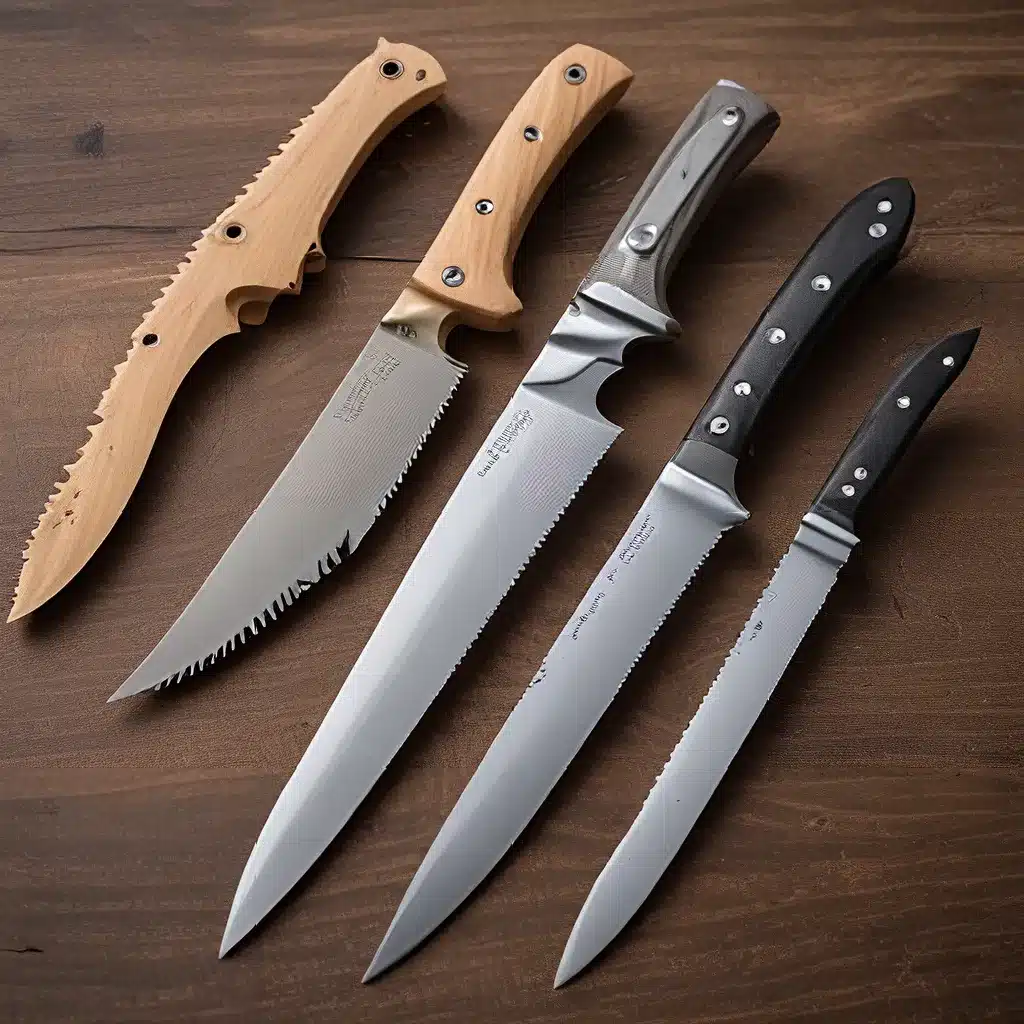
As an avid outdoor enthusiast and frequent visitor to the Herman Knives website, I’ve spent countless hours contemplating the age-old debate: serrated or straight edge – which one’s better? It’s a question that has perplexed knife aficionados for years, and honestly, I’ve gone back and forth on it myself. But today, I’m here to share my hard-won insights and hopefully help you make the best decision for your everyday carry (EDC) needs.
The Push Cut vs. the Slice Cut
To understand the differences between serrated and straight edge knives, we first need to look at the two primary types of cutting actions: the push cut and the slice cut.
The push cut is all about applying steady pressure to push the blade through a material, like when you’re shaving or peeling an apple. For these tasks, a straight edge knife with a polished, razor-sharp blade is going to give you the cleanest, most precise cuts.
On the other hand, the slice cut is all about, well, slicing. This is where you need to apply a sawing motion to cut through tougher materials like rope, thick fabrics, or even crusty bread. And this is where the serrated edge really shines.
The serrations on the blade create a series of small, sharp edges that can “bite” into the material and tear through it more effectively than a straight edge. Even if the serrations are a little dull, the unique cutting action can still get the job done.
The Straight Edge Advantage
So, if serrated blades are so great for slicing, why would anyone choose a straight edge? Well, it comes down to a few key advantages:
Precision and Control: The continuous, unbroken edge of a straight blade allows for incredibly precise, clean cuts. This makes it the superior choice for tasks that require delicate, controlled cutting, like skinning an animal or trimming intricate details.
Ease of Sharpening: Maintaining a straight edge is a breeze compared to the labor-intensive task of sharpening a serrated blade. With a straight edge, you can simply use a sharpening stone or even a pocket knife sharpener to keep it razor-sharp. Serrated blades, on the other hand, often require specialized tools or even professional help to restore their cutting edge.
Versatility: While serrated blades excel at slicing, they can be less effective for the more common “push cut” tasks that we encounter in our daily lives. A straight edge knife is a true all-rounder, capable of handling a wide variety of cutting chores with ease.
The Serrated Edge Advantage
Of course, the serrated edge has its own set of benefits that make it a compelling choice for certain applications:
Tough Material Cutting: When it comes to slicing through tough, fibrous materials like rope, thick fabrics, or even the rind of a pineapple, a serrated blade is simply unbeatable. The serrations’ ability to “grip” the material and tear through it is invaluable in these scenarios.
Longevity: Serrated blades tend to hold their edge for longer than straight edges, thanks to the multitude of small, sharp teeth along the edge. Even when the serrations start to dull, they can still be effective for slicing tasks.
Saw-like Action: The serrations on a knife blade essentially turn it into a miniature saw, making it a handy tool for tasks like cutting through branches or wood. This saw-like action can be a lifesaver in a survival situation or when you need to improvise.
The Compromise: The Combo Blade
Of course, there’s always a middle ground, and in the knife world, that’s the combo blade. These knives feature a combination of a straight edge and serrated edge, giving you the best of both worlds.
The typical combo blade layout has the straight edge section near the tip, for precise cuts, and the serrated edge towards the handle, for those tough slicing tasks. This allows you to take advantage of both cutting styles without having to carry two separate knives.
The main drawback of the combo blade is that you end up with a slightly shorter straight edge section, which can impact the overall cutting performance and control. But for many EDC users, the trade-off is well worth it to have that versatility in a single blade.
Putting It All Together
So, which edge type is the best for your needs? It really comes down to the tasks you’ll be using your knife for most often.
If you find yourself doing a lot of push cuts, like slicing, shaving, and peeling, then a straight edge knife is probably the way to go. The clean, precise cuts and easy sharpening make it a fantastic all-around option.
On the other hand, if you frequently find yourself needing to slice through tough materials, a serrated blade might be the better choice. The saw-like action and ability to maintain its edge for longer make it a valuable tool in certain situations.
And if you can’t decide – or if you just want the best of both worlds – then a combo blade could be the perfect compromise. It may not excel at any one task, but it can handle a wide variety of cutting needs with relative ease.
Ultimately, the choice is yours. But I hope this deep dive into the world of knife edges has given you a better understanding of the pros and cons of each option. Armed with this knowledge, you can make a more informed decision that aligns with your specific EDC needs.
Now, I don’t know about you, but I’m feeling the itch to add a new knife to my collection. Maybe it’s time to head over to Herman Knives and see what they’ve got in store. After all, a sharp, well-chosen blade can make all the difference in the great outdoors (or, let’s be honest, even in the daily grind).


